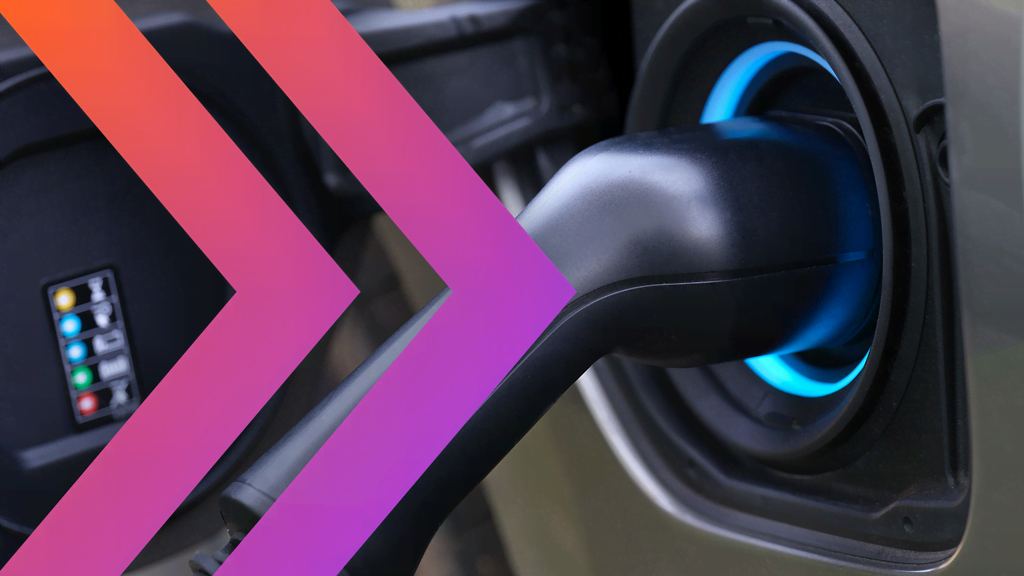If you drive an electric vehicle and you’re on Rhythm’s PowerShift plan, you have a smart opportunity to save. PowerShift offers lower electricity rates during off-peak hours, which typically fall overnight. This guide explains how overnight EV charging works with PowerShift, what to consider when setting up your charging routine, and how to get the most value from your plan.
Why EV Charging and PowerShift Go Hand in Hand
PowerShift is a time-of-use electricity plan that charges different rates based on when you use energy. The lowest rates happen during off-peak hours, when grid demand is low. For most customers, these hours include overnight periods.
Electric vehicles use a lot of electricity to charge, especially when the battery is close to empty. That makes timing even more important. By charging your EV overnight, you get the power you need at a lower cost, and you help reduce demand on the grid during busy hours.
When to Charge Your EV on PowerShift
Your PowerShift plan will include specific off-peak hours. While exact times can vary, they typically include:
Late evening through early morning (such as 10 p.m. to 6 a.m.)
Midday windows when solar power is abundant
Non-peak weekends, depending on demand patterns
Most EV drivers can fully charge their vehicle during these off-peak hours with a Level 2 charger. Even a slower Level 1 charger can make meaningful progress overnight.
Setting Up a Smart Charging Schedule
To benefit from PowerShift, it helps to create a charging routine that matches the plan’s low-cost windows.
Use Built-In Scheduling Tools
Many EVs and home chargers allow you to schedule when charging begins and ends. You can set your car to start charging at 10 p.m. and stop by 6 a.m., for example. This way, the vehicle draws power only during off-peak hours.
Avoid Plugging In Immediately After Work
Charging right when you get home often overlaps with peak pricing. If your vehicle allows scheduled charging, plug it in when you arrive but set the actual charging time to begin later.
Keep an Eye on Weekends
Some plans include different rates for weekends. Make sure you know whether weekend hours follow the same off-peak pattern as weekdays.
Benefits of Overnight Charging on PowerShift
Lower Electricity Costs
Charging during off-peak hours takes advantage of the lowest rates available on PowerShift. This can significantly reduce the cost of driving an electric vehicle.

Support a More Balanced Grid
Shifting EV charging away from peak periods helps reduce stress on the electric grid, especially during extreme heat or cold when other demand is high.
Extend Battery Health
Slower, steady charging during cooler nighttime temperatures is better for long-term battery life than fast charging during hot afternoons.
Convenient Routine
Most people are asleep during off-peak hours. Charging overnight means your car is ready when you wake up, without impacting your daily routine.
How Much Can You Save?
The exact savings depend on:
Your EV’s battery size
How often you charge
Your home charger’s speed
PowerShift’s rate schedule
For example, if you use 30 kilowatt-hours to charge and shift that load entirely to off-peak hours, your savings could range from several dollars per week to more over time. Add that up across a year, and it becomes a meaningful cost advantage.
Do You Need a Smart Charger?
Not necessarily. While smart chargers make it easier to control when charging happens, many EVs already have scheduling features built in. Even with a basic setup, you can shift your charging time manually or use timers on the outlet.
If you do choose a smart charger, look for one that offers:
Custom charging schedules
Mobile control
Usage tracking
Compatibility with your EV model
These features give you more flexibility and help you stay aligned with PowerShift’s low-rate hours.
Charging at Home vs Public Charging
Public fast chargers offer speed, but they often cost more and may not align with time-based pricing. Home charging on PowerShift allows you to:
Charge more affordably
Set your schedule
Use lower grid demand periods
Monitor your usage more easily
For daily needs, home charging is often the best match for PowerShift customers.
If you own an electric vehicle and you're on PowerShift, charging overnight is one of the smartest moves you can make. It saves money, supports grid health, and keeps your EV ready for the day ahead.
With a little setup, overnight charging becomes part of your routine, and a perfect match for a time-based electricity plan built around smart energy use.
FAQs
What time should I set my EV to charge on PowerShift?
Start charging during your plan’s off-peak hours. In many cases, that begins around 10 p.m. and ends around 6 a.m.
Do I need a smart charger to benefit from overnight charging?
No. Many EVs have scheduling tools built in. A smart charger offers more control, but it is not required.
Is charging at night better for my battery?
Yes. Cooler temperatures and steady charging are easier on battery health than high-speed charging during hot afternoon hours.
Will I still save if I forget to schedule my charging?
If you charge during peak hours, your rate will be higher. Setting a schedule helps you stay consistent and get the most value from your plan.
Can I still charge at public stations if I’m on PowerShift?
Yes. PowerShift affects your home electricity rate. Charging at public stations is separate and usually billed directly by the station provider.




